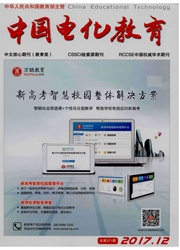

 中文摘要:
中文摘要:
2016年教育部教育信息化工作要点明确指出要重点推动"网络学习空间人人通",促进教与学的方式变革。该文以网络学习空间中的交互为研究对象,采集学习者在线交互时产生的系统日志、帖子内容等数据,基于社会网络分析的视角,结合内容分析与行为序列分析等多种方法,分别分析学习者交互网络的密度、点度中心度、中介中心度和接近中心度等参数,采用Gunawardena的5阶段交互编码框架对交互内容进行编码分析,重点探究交互行为模式及规律。研究结果发现:网络学习空间中形成了一个相对稠密的交互网络,学习者之间的交互较多,但较多停留在分享与澄清、认知冲突等较低层级,而意义协商、检验修正、达成与应用等较高层级比例较小,并分析了交互行为转换模式;核心参与者与边缘参与者的交互层级存在明显差异。研究最后分析与讨论了局限性与今后的努力方向。
 英文摘要:
英文摘要:
Quantity and quality of the online asynchronous interaction and discussion plays an important role in promoting study. Online learning space is one of the core aim of education informatization construction in our country, research of the interaction behavior is very important. This paper selects CCNU learners' interaction in online learning space as the research object, using social network analysis, content analysis, sequences analysis and other methods to explore Density of the Network, Local Centrality, Betweenness Centrality, Closeness Centrality, and focuses on the interaction behavior mode and the level of knowledge construction. This paper finds that online learning space formed a relatively dense network of interaction; the interaction between learners is more stay on low stage of knowledge construction (KC1,KC2). There are significant differences of interaction level between the core and the edge of the participants. At last, the limitations and future directions were discussed.
 同期刊论文项目
同期刊论文项目
 同项目期刊论文
同项目期刊论文
 期刊信息
期刊信息
